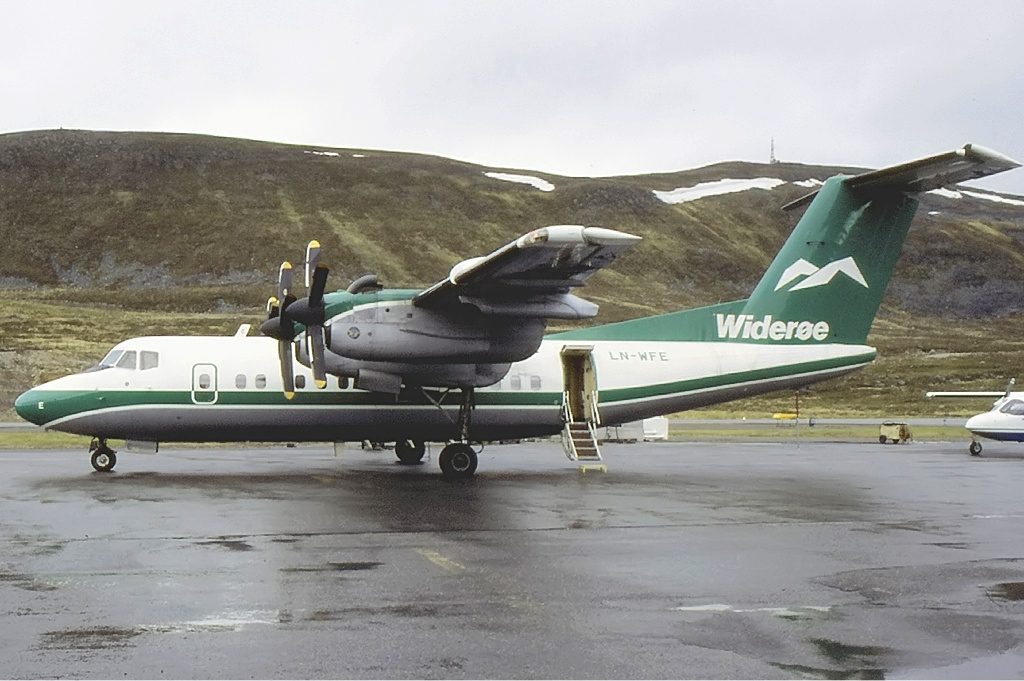
De Havilland was started in 1920 by Geoffrey de Havilland (1882 – 1965) at Stag Lane Aerodrome, Edgware on the outskirts of north London. Operations were later moved to Hatfield in Hertfordshire. De Havilland Canada started life as a subsidiary in 1928, for the purpose of making assorted versions of Moths, variously described as light aircraft/ sports planes/ military trainers. During the second world war, de Havilland Canada was nationalized, by the Canadian government. It remained a crown corporation until the 1980s, when the government privatized it, then sold it to Boeing, in 1986.
While the British parent company is especially noted for the versatile design of its DH.98 Mosquito warplane, made largely of wood with 7 781 produced between 1940 and 1950, and the DH 106 Comet, the world’s first jet airliner, with 114 produced between 1949 and 1964, de Havilland Canada innovated some unique designs, especially suited for flying in the “bush”. These are:
| Type | Purpose | Capacity | first flight | production | # |
| DHC-1 Chipmunk | Trainer | 2 | 1946 | 1947 – 1956 | 1 283 |
| DHC-2 Beaver | Bush | 1 + 7 | 1947 | 1947 – 1967 | 1 657 |
| DHC-3 Otter | STOL Bush | 1 + 11 | 1951 | 1953 – 1967 | 466 |
| DHC-4 Caribou | STOL Cargo | 3 + 32 | 1958 | 1961 – late 1960s | 307 |
| DHC-5 Buffalo | STOL Cargo | 3 + 41 | 1961 | 1965; 1974 | 122 |
| DHC-6 Twin Otter | STOL Utility | 2 + | 1965 | 1966 – 1988 2008 – | 985 |
| DHC-7 Dash 7 | STOL Regional | 2 + 35 – 54 | 1975 | 1978 – 1988 | 113 |
| DHC-8 Dash 8 | Regional | 2 + 37 – 90 | 1983 | 1984 – | 1 249 |
Despite Canadian government claims to have guarantees to prevent Boeing discontinuing product lines, both the Twin Otter and Dash 7 were discontinued, with their jigs and specialised manufacturing equipment destroyed. DHC was eventually acquired by Bombardier Aerospace in 1992, and integrated into the Bombardier group of companies.
On February 24, 2006, Viking purchased the type certificates from Bombardier Aerospace for all the out-of-production de Havilland Canada aircraft (DHC-1 through DHC-7). The ownership of the certificates gave Viking the exclusive right to manufacture new aircraft.
In November 2018, Viking Air’s holding company, Longview Aviation Capital, announced the acquisition of the Q400 program – a modernized version of the Dash 8, where the Q (for quiet) indicates that planes are fitted with active noise control systems – along with the rights to the de Havilland name and trademark. The deal, which closed on 2019-06-03 following regulatory approval, brought the entire de Havilland product line under De Havilland Aircraft of Canada Limited.


